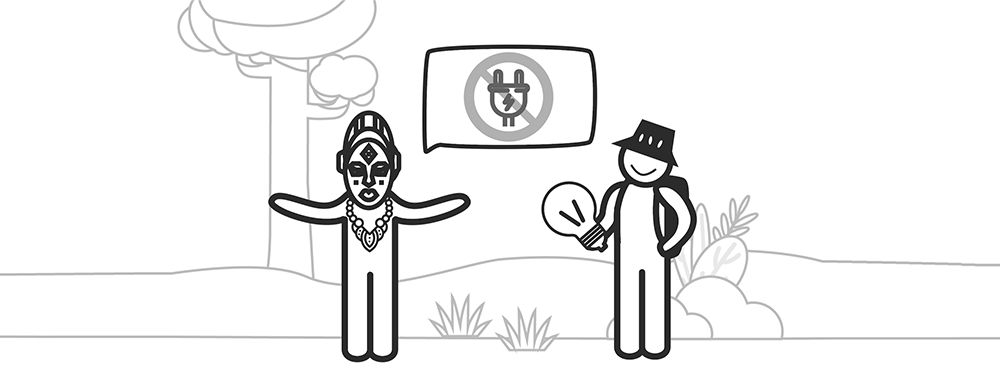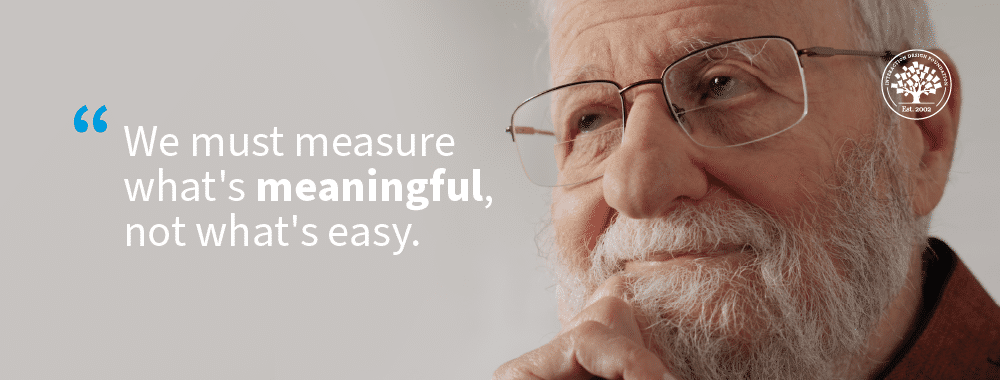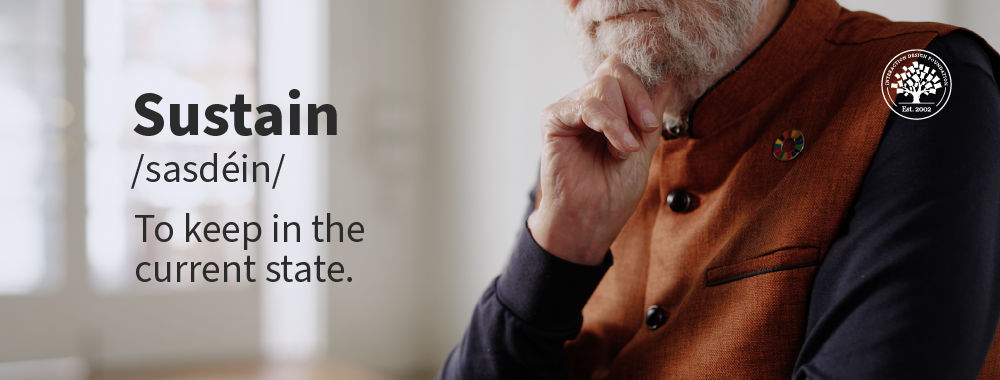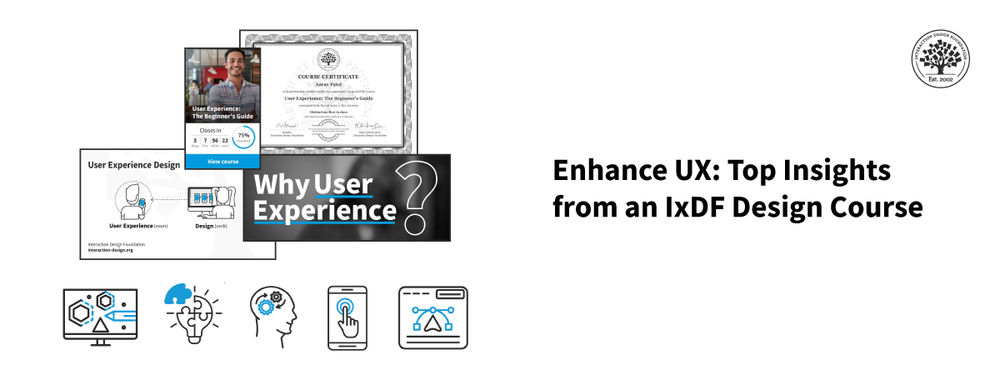Human-Centered Design: How to Focus on People When You Solve Complex Global Challenges

- 570 shares
- 6 mths ago
Humanity-centered design is a practice where designers focus on people’s needs not as individuals but as societies with complex, deep-rooted problems. Designers can co-create proper solutions when they work with populations, address the right problems, perform systems analyses and co-design small, simple interventions to embrace incrementalism to make gradual progress.
“Learn how to work together and find a solution that is most appropriate for the people.”
— Don Norman: Father of User Experience (UX) design, author of the legendary book The Design of Everyday Things, co-founder of the Nielsen Norman Group, and former VP of the Advanced Technology Group at Apple.
See why humanity-centered design is key to designing the best solutions to complex global problems.
IBM 701 by Dan (CC BY-SA 2.0)
https://www.flickr.com/photos/94366076@N00/3432301223
Dual Colors by Marcin Wichary (CC BY 2.0)
https://www.flickr.com/photos/8399025@N07/2289491442
USAF/IBM SAGE by Joi Ito (CC BY 2.0)
https://www.flickr.com/photos/35034362831@N01/494395374/Cognitive science and user experience expert Don Norman identified the need to evolve away from user-centered design to people-centered design and human-centered design, so designers develop a broader view of their responsibilities to the people they design for. But we say “person” rather than “human” when we discuss the people we want to help. And we focus on them as communities, not individuals.
© Interaction Design Foundation, CC BY-SA 4.0
Humanity-centered design represents the ultimate challenge for designers to help people improve their lives. Where “human-centered” puts a face to a user, “humanity-centered” expands this view far beyond: to the societal level of world populations who face hordes of highly complex and interrelated issues that are most often tangled up in large, sophisticated, “human-caused” systems. That’s why we as designers use 21st century design, to analyze wicked problems and complex socio-technical systems. From there, we try to accommodate the needs of the groups we want to help. Without this, we’d be left in the same old trap of designing only what we think will work. And these areas especially distort our views as designers:
Monoculture – Designers who live in Western (including Western-influenced) societies inhabit a reality where everyone learns from the same books and universities and attends the same conferences. Consequently, everyone tends to think the same way: a dangerous thing. Like crops in nature, there’s a better chance of surviving a disaster if we diversify. But it’s challenging to overcome Western biases, stop designing ill-conceived, patronizing “solutions” that fail toxically, and listen to other cultures and their ways of seeing their world.
The world’s economic systems – Pioneering economist Adam Smith had seen how greedy individuals could twist the invisible hand of the market. And too much of the economic system continues to be exploited by the rich and wealthy for gain. So, the gulf continues to widen in terms of the availability of resources between the very rich and the very poor.
The world’s political systems – They’re also damaged, with the interests of the powerful often blocking the way to addressing global problems.
The internet – With fake news and legions of distorted opinions flooding cyberspace, the real picture of the state of our world and its many systems is increasingly hard to understand.
Humanity-centered design is the answer Norman proposes to change many things, including the economic model, so we can learn from other traditions and serve the ultimate end: to make the world a better place.
You can apply the principles of humanity-centered design to any complex problem in the world, be it related to politics, economics, education or any of a host of others (e.g., from the UN’s Sustainable Development Goals).
The principles of humanity-centered design are similar to traditional human-centered design principles. Besides expanding the scope of traditional HCD to include the ecosystem, humanity-centered design adds a fifth dimension to the four principles: Design with the community.
Focus on the entire ecosystem of people, all living things, and the physical environment.
Everything is connected. The actions in one part of the globe can have a ripple effect across different regions. For example, you might find that islanders in a Far-East nation have severe pollution problems and their fishing industry is dying. This could be due to plastics dumped in a neighboring island. It could also be linked to poor recycling infrastructure that leads to plastic getting dumped near the sea.
There may not be a single source of the problem because of the interconnected nature of the world today.
Solve the root issues, not just the problem as presented (which is often the symptom, not the cause).
Dig deep and examine cause-and-effect chains carefully. There are often very complex links. In our example, a program to remove the plastic from the islanders’ seafront would be treating symptoms. The problem runs deeper. Try the 5 Whys approach to uncover root causes.
Take a long-term, systems point of view. We must realize that the impact of our actions on society and the ecosystem can take years to appear or manifest even decades later.
Everything is a system. Working back through a cause-and-effect chain, you’ll find other forces at work. In our example, there’s an agreement between countries. How would you address that? Which experts could help reduce the overflow of recyclable plastic going abroad? Is recycling not a good thing, after all? As we can see, it’s complex; it’s a system. So, do a long-term systems analysis to find the connections, knock-on effects, etc.
Continually test and refine the proposed designs to ensure they truly meet the concerns of the people and ecosystem for whom they are intended.
Do small, simple interventions to tackle the most important problem. See what works and what brings you closer to a sustainable solution. Tweak it when the results seem promising and keep learning from the feedback. In our example, this could involve the repurposing of plastic containers into bricks to make low-income housing. Meanwhile, governments could appreciate that recycling isn’t as straightforward as most people assume. Perhaps the exporter country could encourage manufacturers to use less plastic, find alternative packaging, etc.
Design with the community, not for them.
Professional designers should serve as facilitators and support community members to meet their concerns. This is by far the most important principle in humanity-centered design. Continuing our previous example, designers must refrain from imposing solutions on the community that faces the pollution crisis.
Often, people who face the problems also have good solutions, but only need support to implement them. Furthermore, when solutions come from within the community, people are more likely to accept the solution than if it were to come from outside.
Overall, humanity-centered design is an opportunity to move away from designing small, simple things to designing systems; political systems that can effect real change, real solutions to big problems affecting our planet and the precious life it sustains.
© Pixabay, CC0
Ready to shape the future, not just watch it happen? Join the Father of UX Design, Don Norman, in his two courses, Design for the 21st Century and Design for a Better World, and turn your care for people and the planet into design skills that elevate your impact, your confidence, and your career.
Norman, Donald A. Design for a Better World: Meaningful, Sustainable, Humanity Centered. Cambridge, MA: The MIT Press, 2023.
Don Norman, a pioneer in design thinking, introduced the concept of humanity-centered design to address the limitations of traditional human-centered design. While human-centered design focuses on individual user needs, humanity-centered design expands this perspective to consider the broader impact on society, the environment, and future generations.
Norman outlines five principles of humanity-centered design:
Solve the core, root issues: Address underlying causes, not just symptoms.
Focus on the entire ecosystem: Consider all living things and the physical environment.
Adopt a long-term, systems viewpoint: Recognize that many significant impacts emerge over time due to complex interdependencies.
Embrace continuous testing and refinement: Ensure designs meet the evolving needs of all stakeholders.
Prioritize sustainability and responsibility: Design with ethical considerations and the well-being of future generations in mind.
For example, in transportation design, a human-centered approach might focus on enhancing driver comfort, whereas a humanity-centered approach would explore sustainable public transit solutions that benefit society and the environment.
From adopting humanity-centered design, designers can create solutions that are ethical, sustainable, and inclusive, ensuring technology serves the greater good.
Watch as UX Pioneer, Don Norman explains humanity-centered design and its significance in modern design practices:
For more on humanity-centered design, take our course Design for a Better World with Don Norman.
It depends on the perspective, so there is no cut-and-dried answer. Designers should prioritize humanity-centered design over traditional user-centered approaches to address broader societal and environmental impacts. While user-centered design focuses on individual user needs, humanity-centered design considers the well-being of communities, cultures, and the planet.
For example, a user-centered design might optimize a smartphone’s interface for ease of use, while a humanity-centered design would consider the device’s environmental footprint and ethical manufacturing practices. By adopting humanity-centered design, designers can create products that contribute positively to society and the environment, ensuring a more equitable and sustainable future.
Watch as Don Norman explains humanity-centered design and its significance in modern design practices:
For more on humanity-centered design, take our course Design for a Better World with Don Norman.
Designers can evaluate the long-term consequences of their decisions by considering social, environmental, and ethical impacts. However, they struggle to balance long-term considerations with immediate business needs.
Designers can conduct impact assessments to gauge long-term impacts to predict potential risks and benefits. They can use scenario planning to explore how their design might evolve. Engaging with sustainability, ethics, and policy experts can also help identify unintended consequences. Collecting long-term user feedback helps ensure that a design continues to serve its purpose responsibly.
Designers should also monitor real-world outcomes and be willing to adjust their solutions if negative effects arise. By prioritizing ethical responsibility, sustainability, and adaptability, designers can create products and services that stand the test of time while benefiting individuals and society.
Watch as Don Norman explains humanity-centered design principles and their significance:
For more on humanity-centered design, take our course Design for a Better World with Don Norman.
Designers face tough challenges when trying to apply humanity-centered design. One of the biggest hurdles comes from business priorities. Companies often focus on short-term profits, making it hard for designers to push for ethical, sustainable solutions. Deep research and long-term impact assessments take a backseat when tight budgets and deadlines loom.
Another challenge is balancing different needs. A solution that helps one group might unintentionally harm another. Designers must work with diverse communities, experts, and policymakers to get the full picture, but that takes time and resources that businesses may not want to invest.
Resistance to change also makes things harder. Companies and users often prefer familiar solutions, even if they aren’t the best for society or the environment. Since humanity-centered design focuses on long-term benefits, proving its value can be tricky. Still, designers who stay committed can create real, lasting impact.
Watch as UX Pioneer, Don Norman explains the principles of humanity-centered design and their significance:
For more on humanity-centered design, take our course Design for a Better World with Don Norman.
Small design teams or startups can do this by focusing on practical, high-impact actions within their available resources. While some ethical and sustainable choices require investment, many are strategic and cost-effective to integrate.
First, they can engage directly with users and communities to understand broader needs. While in-depth research can be costly, teams can leverage online surveys, remote interviews, and partnerships with local organizations to gather valuable insights.
Second, they can prioritize accessibility and sustainability early to avoid costly retrofitting later. Some design choices require minimal effort. However, eco-friendly materials and ethical supply chains may involve higher costs, so teams should seek scalable, sustainable options that align with their budget.
Third, small design teams can test and refine solutions continuously by gathering real-world feedback and making incremental improvements. However, while iterative testing helps ensure ethical and effective designs, it still requires time, tools, and structured feedback processes.
Last but not least, they can collaborate with experts and open-source communities to extend their capabilities. While open-source tools are widely available, some expert insights (e.g., sustainability consulting, policy advising) may require investment.
From making thoughtful, resource-conscious choices, even small teams can integrate humanity-centered design and create products that serve both people and the planet.
Watch as Don Norman explains the principles of humanity-centered design and their significance in modern design practices:
For more on humanity-centered design, take our course Design for a Better World with Don Norman.
Designers can demonstrate the practical business benefits and the ethical impact of adopting humanity-centered design principles. Since many businesses prioritize short-term profits, designers must frame ethical design to align with financial, competitive, and strategic goals.
First, they can use credible data and case studies to show how inclusive and sustainable designs can expand market reach, enhance brand reputation, and reduce future risks.
Second, they can position ethical design as a competitive differentiator—when it meets consumer demand and market conditions. Some brands have successfully leveraged social responsibility as a selling point, but this approach is most effective in industries where ethics influence purchasing decisions.
Third, they can advocate for minor, low-risk improvements to demonstrate quick wins. However, some sustainability efforts—like switching to eco-friendly materials—may involve higher upfront costs or supply chain challenges. Teams should identify scalable changes that balance ethics with feasibility.
Finally, designers must speak the language of business. Instead of focusing solely on ethical arguments, they should demonstrate how humanity-centered design supports revenue growth, customer loyalty, and risk management.
Ethical design is most persuasive when it aligns with a company’s existing goals, innovation strategy, and long-term financial success. By taking a realistic, strategic approach, designers can increase stakeholder buy-in and help businesses see the value of humanity-centered design in both ethical and economic terms.
Watch as Don Norman explains the principles of humanity-centered design and their significance in modern design practices:
For more on humanity-centered design, take our course Design for a Better World with Don Norman.
Educational institutions can teach humanity-centered design by making it a core part of the curriculum. They must go beyond technical skills and help students understand design’s impact on society, the environment, and future generations.
First, they can incorporate real-world projects that focus on social good. Students should design solutions for actual communities, not just theoretical users.
Second, they must teach ethics and sustainability alongside usability. Courses should cover topics like accessibility, cultural sensitivity, and environmental responsibility.
Third, they can invite experts from diverse fields—such as sociology, environmental science, and policy—to show how design connects to larger systems.
Last but not least, they should encourage critical thinking and long-term impact assessments. Students must learn to ask, “Who does this design help or harm?” By prioritizing ethical decision-making, schools can prepare designers to create responsible, lasting solutions.
Watch as UX Pioneer, Don Norman explains humanity-centered design and its significance in modern design practices:
Enjoy our Master Class Exclusive: Design for a Better World, a Discussion with Don Norman, Founding Director - Design Lab, University of California, San Diego. Co-Founder, Nielsen Norman Group.
The Fairphone is one example that demonstrates aspects of humanity-centered design. It challenges the electronics industry by using ethically sourced materials and ensuring fair wages for workers. Sustainability efforts include modular design for easy repairability and reduced e-waste.
Watch as Don Norman explains humanity-centered design and its significance in modern design practices:
Enjoy our Master Class Exclusive: Design for a Better World, a Discussion with Don Norman, Founding Director - Design Lab, University of California, San Diego. Co-Founder, Nielsen Norman Group.
Norman, D. A. (2023). Design For A Better World: Meaningful, Sustainable, Humanity Centered. The MIT Press.
In Design for a Better World, user experience design pioneer Don Norman critiques traditional human-centered design, arguing for a shift toward humanity-centered design that prioritizes sustainability, ethics, and long-term impact. The book explores how human behavior has contributed to global crises, from climate change to social instability, and how design can be a tool for meaningful change. Norman emphasizes the importance of designing for quality of life, not just usability, advocating for a systemic approach that considers ecological and social factors. By rethinking design’s role in shaping the future, he presents a compelling vision for how designers can contribute to a more equitable and sustainable world.
Papanek, V. (2005). Design For The Real World: Human ecology and social change (2nd ed.). Chicago Review Press.
This title originally appeared in 1971 and so predates Don Norman’s humanity-centered design. Nevertheless, in Design for the Real World, Victor Papanek critiques conventional design practices, emphasizing designers' ethical responsibilities. He argues against creating frivolous, unsafe, and environmentally harmful products, advocating instead for designs that address genuine human needs, particularly for marginalized communities.
Papanek introduces the concept of socially and ecologically responsible design, urging designers to consider the broader impacts of their work on society and the environment. The book challenges designers to move beyond aesthetics and market-driven motives, promoting a more humane and sustainable approach to design. Its enduring relevance has made it a seminal text in design education and catalyzed discussions on ethical design practices.
Here are some steps designers can try to apply humanity-centered design:
Understand the broader context: Examine how your design impacts individual users, communities, cultures, and the environment.
Engage diverse stakeholders: Involve various groups, including marginalized communities, to gather multiple perspectives and needs in the design process.
Define ethical objectives: Establish goals that promote social equity, environmental sustainability, and long-term well-being.
Ideate responsibly: Generate ideas that align with ethical objectives and consider potential societal and environmental consequences.
Prototype inclusively: Develop prototypes that are accessible and consider the needs of all potential users.
Test for systemic impact: Evaluate how your design affects broader systems and make necessary adjustments to mitigate adverse outcomes.
Implement sustainably: Ensure the final product or service supports ecological balance and social responsibility.
By integrating these steps, designers can create solutions that are not only user-friendly but also beneficial to society and the environment.
Watch as Don Norman explains the principles of humanity-centered design and their significance:
Enjoy our Master Class Exclusive: Design for a Better World, a Discussion with Don Norman, Founding Director - Design Lab, University of California, San Diego. Co-Founder, Nielsen Norman Group.
Remember, the more you learn about design, the more you make yourself valuable.
Improve your UX / UI Design skills and grow your career! Join IxDF now!
You earned your gift with a perfect score! Let us send it to you.
We've emailed your gift to name@email.com.
Improve your UX / UI Design skills and grow your career! Join IxDF now!
Here's the entire UX literature on Humanity-Centered Design by the Interaction Design Foundation, collated in one place:
Take a deep dive into Humanity-Centered Design with our course Design for a Better World with Don Norman .
Master complex skills effortlessly with proven best practices and toolkits directly from the world's top design experts. Meet your expert for this course:
Don Norman: Father of User Experience (UX) Design, author of the legendary book “The Design of Everyday Things,” co-founder of the Nielsen Norman Group, and former VP of the Advanced Technology Group of Apple.





We believe in Open Access and the democratization of knowledge. Unfortunately, world-class educational materials such as this page are normally hidden behind paywalls or in expensive textbooks.
If you want this to change, , link to us, or join us to help us democratize design knowledge!
